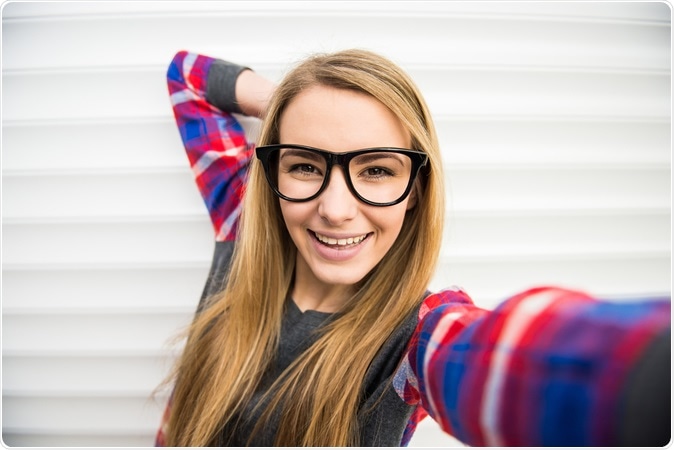Liar, Liar, Pants on Fire
"Your nose doesn't look big. It's the selfie. It's distorting."
"You look great, I'm looking right at you...A selfie is not accurate."
Boris Paskhover, facial plastic and reconstructive surgeon, Rutgers University

Portrait A is taken at 12 inches; portrait B is taken at 60 inches. Credit: Boris Paskhover
"Despite the ease with which selfies are taken, the short distance from the camera causes a distortion of the face owing to projection, most notably an increase in nasal dimension."Imagine, if you will, a plastic surgeon -- many of them, in fact -- imbued with such a professional ethic that they went out of their way to attempt to prove to people convinced that they have an oversize proboscis that their conviction was in reality a perception foisted on them through an explicable distortion. That taking self-portraits with an iphone camera or any digital camera will result in the nose appearing to have much greater prominence in the centre of their face than a reflection of reality.
"Importantly, this distortion does not accurately reflect the three-dimensional appearance of the nose."
"[Taken at12 inches in distance] selfies increase nasal size by 30 percent in males and 29 percent in females. [Whereas a normal portrait distance of five feet from the camera results in] essentially no difference in perceived [nose] size."
Study: Nasal Distortion in Short-Distance Photographs: The Selfie Effect
People so convinced of the ungainly look of their facial features dominated by an overbearing nose that they insist they must undergo plastic surgery to right the wrong that careless nature imposed upon them. Social media selfies are so ubiquitous and so revealing of the presence of a cartoonish-in--appearance semblance as to make people feel self-conscious about their appearance, inciting them to take radical steps to correct the situation through surgery, of all things.
When it's so much easier and certainly more effective to stop taking those stupid close-range selfies.
And when a doctor to whom you've gone to arrange that surgery to reduce the size of the nose you've been endowed with -- and whose proportions you should be familiar with by now, but have been convinced otherwise by selfies -- assures you that your nose is perfectly normal and suited in size to the dimensions of your face, you won't believe him. So, that attitude set Dr. Paskhover on a trajectory to research the issue. "There's got to be a way to prove it", he prodded himself.
What Dr. Paskhover experienced, when patients kept coming to him complaining of exaggerated nose sizes, turns out to be an experience familiar to many plastic surgeons. Roughly half of whom had patients wanting surgery "for improved selfies and pictures on social media platforms". So Dr. Paskhover and a number of his colleagues set out to prove that reconstructive surgery was not required for a phenomenon that distorted image, through iphone photos whose results they characterize as "fun-house mirrors".
As well, they pointed out that exaggerated filters on apps such as Snapchat functioned in such a manner as to lend a cartoonish appearance to a selfie. Leaving people with a distinct feeling of dislike for their looks, prompting concerns in the medical profession about dysmorphia, a pathological dislike of one's appearance. A dysfunction that could prove extremely injurious to one's self-regard in a social media-distorted environment.
Planning to measure the effect of the appearance of increased nasal dimensions in selfies, the researchers modelled the face as a grouping of parallel planes, choosing "bizygomatic breadth" as a fixed reference reflecting the distance between the cheekbones allowing them to draw up a formula to measure the apparent width of the nose as the camera achieved distance from the face.
At an infinite distance the camera would reflect no distortion; at 12 inches in distance the selfies reflected distinct increases in nasal size, while a normal portrait distance of five feet from the camera produced "essentially no difference in perceived size". Similar to what accrues, pointed out Dr. Paskhover, when looking in a mirror.
And nor is the nose the only facial feature to appear larger since a side-on selfie could amplify the appearance of the ear; a shot from below, the chin, or a shot from above, the forehead. "It's whatever is closer to the camera", pointed out Dr. Paskhover, reasonably. However, since most selfies are taken face-on, it is noses that appear most prominent and, as it happens, the easiest target for plastic surgery.
"Don't focus on your phone, relax", he advises.
 |
| Image Credit: VGstockstudio / Shutterstock |
Labels: Appearance, Health, Self-Respect, Surgery

0 Comments:
Post a Comment
<< Home